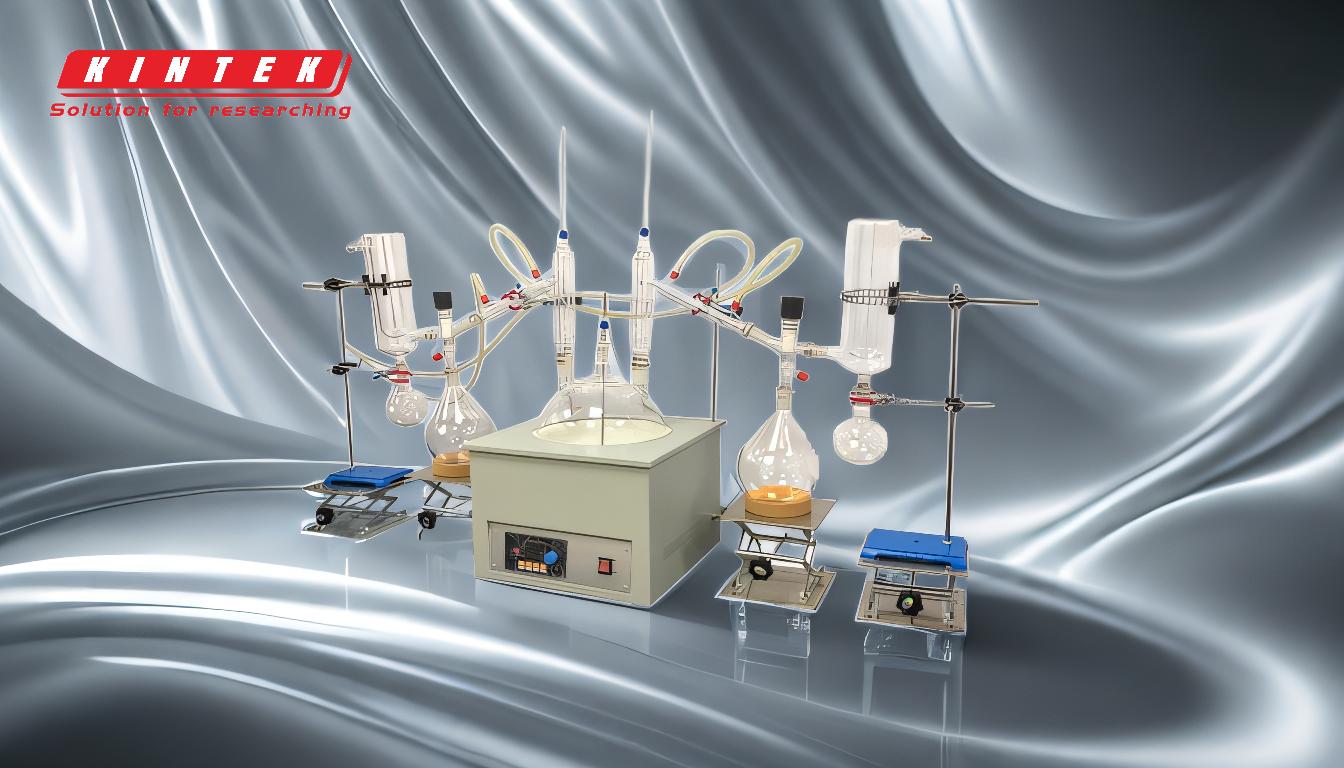Distillation efficiency is influenced by a combination of factors, including system vacuum value, heat pot temperature, speed of the evaporation bottle, and cooling medium temperature. These factors collectively determine the rate and quality of separation during distillation. Additionally, the type of distillation (simple, fractional, or molecular) and the properties of the materials being distilled (e.g., boiling points) play a significant role. Operational parameters such as feed rate, body temperature, and vacuum level must be carefully controlled to ensure consistent efficiency and product quality. The choice of equipment components, such as vacuum pumps and sealing materials, also impacts performance.
Key Points Explained:

-
System Vacuum Value:
- The vacuum level is crucial in reducing the boiling points of materials, allowing for more efficient evaporation at lower temperatures.
- A higher vacuum value can improve distillation efficiency but must be balanced with the equipment's pressure resistance.
- Components like vacuum pumps, sealing rings, and vacuum tubes (e.g., PTFE for better wear and corrosion resistance) are critical for maintaining an effective vacuum.
-
Heat Pot Temperature:
- The temperature of the heat pot directly affects the rate of evaporation. Higher temperatures can increase evaporation rates but may risk thermal degradation of sensitive materials.
- Optimal temperature settings depend on the boiling points of the substances being distilled and the vacuum level applied.
-
Speed of the Evaporation Bottle:
- The rotation speed of the evaporation bottle influences the surface area of the liquid exposed to heat, enhancing evaporation efficiency.
- Adjusting the rotation speed according to the sample size and viscosity ensures uniform heating and prevents bumping or splashing.
-
Temperature of the Cooling Medium:
- The cooling medium (e.g., water or refrigerant) condenses the vapor back into liquid form. Lower cooling temperatures improve condensation efficiency.
- Proper cooling ensures that the distillate is collected effectively and minimizes losses due to vapor escaping.
-
Type of Distillation:
- Simple Distillation: Suitable for separating liquids with significantly different boiling points (greater than 25 °C or 45 °F).
- Fractional Distillation: More efficient for separating liquids with closer boiling points (less than 25 °C or 45 °F).
- Molecular Distillation: Ideal for purifying and concentrating natural products under low vacuum pressure, especially for heat-sensitive materials.
-
Operational Parameters:
- Feed Rate: A steady feed rate ensures consistent separation efficiency and prevents overloading the system.
- Body Temperature: Maintaining a stable temperature in the distillation apparatus is critical for uniform evaporation and condensation.
- Vacuum Level: Consistent vacuum levels are necessary to maintain the desired boiling points and separation efficiency.
-
Equipment Components:
- The choice of materials for components like sealing rings and vacuum tubes (e.g., PTFE vs. rubber) affects durability and performance.
- High-quality vacuum pumps with sufficient power are essential for achieving and maintaining the required vacuum levels.
-
Material Properties:
- The boiling points of the materials being distilled determine the distillation method and conditions.
- Introducing a vacuum can lower boiling points, reduce thermal degradation, and shorten residence times, improving overall efficiency.
By carefully controlling these factors and selecting the appropriate distillation method and equipment, operators can optimize distillation efficiency and achieve high-quality separation results.
Summary Table:
| Factor | Impact on Distillation Efficiency |
|---|---|
| System Vacuum Value | Lowers boiling points, enabling efficient evaporation at lower temperatures. |
| Heat Pot Temperature | Directly affects evaporation rate; optimal settings prevent thermal degradation. |
| Evaporation Bottle Speed | Higher rotation speeds increase surface area, improving evaporation efficiency. |
| Cooling Medium Temperature | Lower temperatures enhance condensation efficiency, reducing vapor losses. |
| Type of Distillation | Simple, fractional, or molecular distillation chosen based on boiling point differences. |
| Operational Parameters | Feed rate, body temperature, and vacuum level must be controlled for consistent efficiency. |
| Equipment Components | High-quality vacuum pumps and durable materials like PTFE improve performance and longevity. |
| Material Properties | Boiling points and vacuum compatibility determine distillation method and conditions. |
Want to optimize your distillation process? Contact our experts today for tailored solutions!















